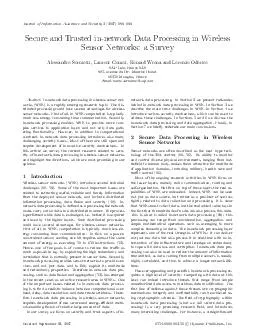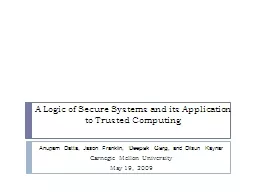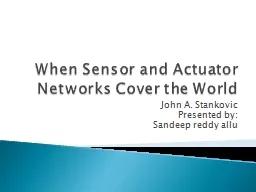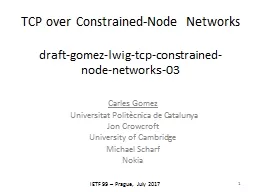PDF-Journal of Information Assurance and Security Secure and Trusted innetwork Data Processing
Author : trish-goza | Published Date : 2014-12-03
Maurice Donat 06250 Mougins France Emailnamesurnamesapcom Abstract Innetwork data processing in wireless sensor net works WSN is a rapidly emerging research topic
Presentation Embed Code
Download Presentation
Download Presentation The PPT/PDF document "Journal of Information Assurance and Sec..." is the property of its rightful owner. Permission is granted to download and print the materials on this website for personal, non-commercial use only, and to display it on your personal computer provided you do not modify the materials and that you retain all copyright notices contained in the materials. By downloading content from our website, you accept the terms of this agreement.
Journal of Information Assurance and Security Secure and Trusted innetwork Data Processing: Transcript
Download Rules Of Document
"Journal of Information Assurance and Security Secure and Trusted innetwork Data Processing"The content belongs to its owner. You may download and print it for personal use, without modification, and keep all copyright notices. By downloading, you agree to these terms.
Related Documents













